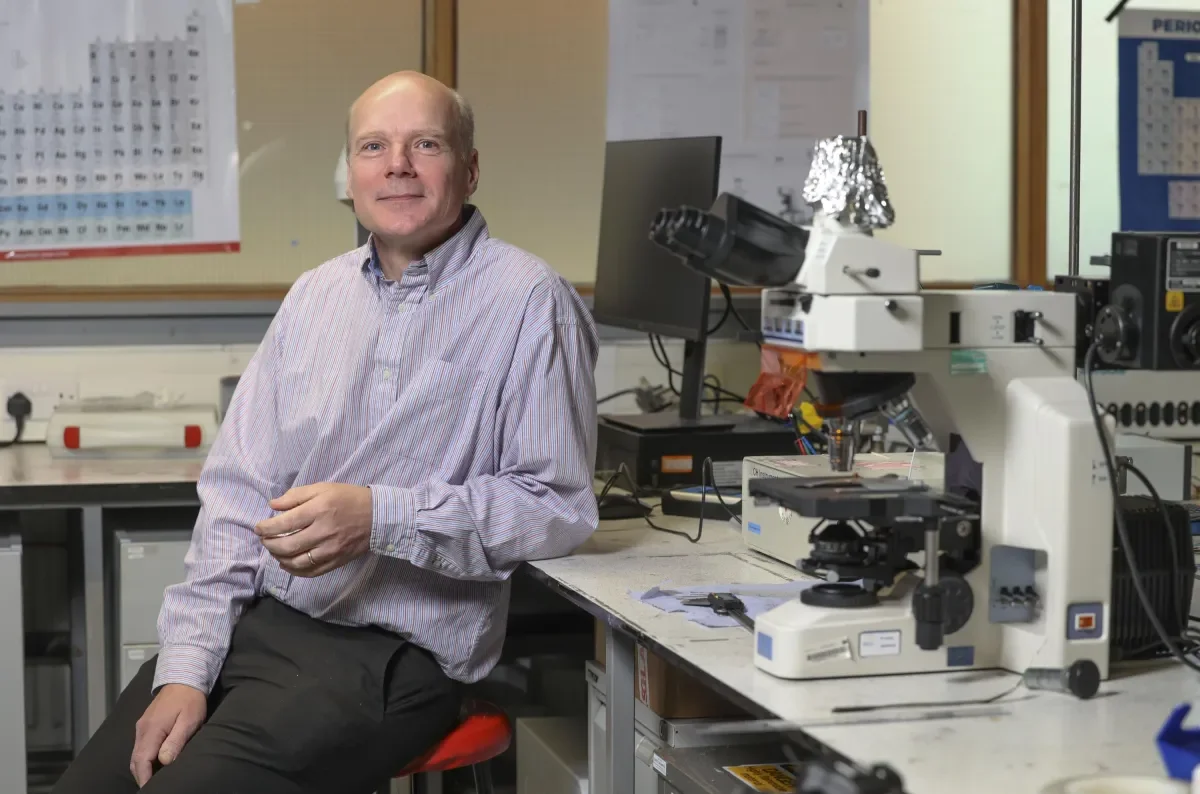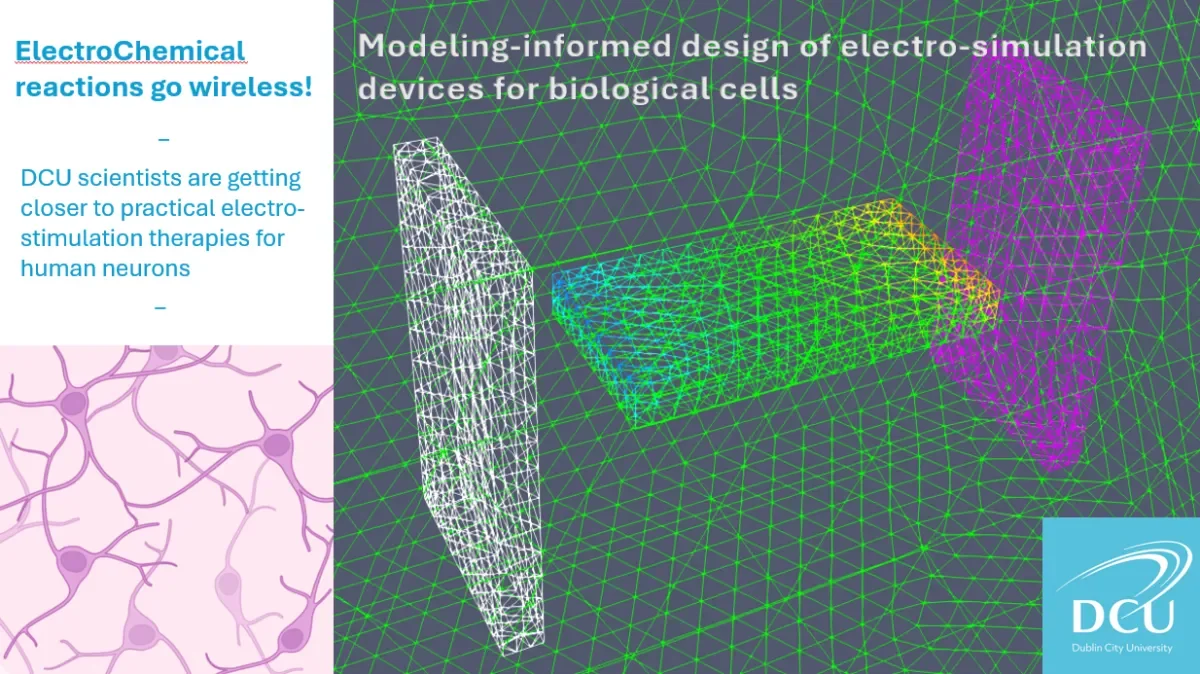

DCU researchers discover basis for developing wireless electrical stimulation technology with wide ranging applications
Electrical stimulation is a new and powerful tool for regulating cell behavior in tissue engineering and regenerative medicine. It is performed by connecting electrodes (wires) directly to living tissue, organs, or individual cells. Unlike surgery or other therapeutic actions, it is considered a reversible and non-destructive treatment.
Making this process wireless means there is no need to use electrodes, as electrical stimulus is delivered by creating electrical fields. As well as removing wires from the process, this new iteration would also allow stimulation of previously non-accessible parts of the body. It would also allow for studying cells, tissues, or organs without interrupting their biological routines.
Dr. Michal Wagner said:
“Our discovery is in understanding the relationship between applied electrical quantities and resultant electro-stimulating action, thus gaining control over the shape and strengths of electric fields within devices for wireless electrical stimulation. Armed with this knowledge, we can create digital versions of electrostimulation devices and test different hypotheses before fabrication, greatly reducing the development time of wireless electrical stimulation therapies.”

The new discovery made at DCU provides a way of predicting and controlling electric fields for fabrication of the bio-functional materials which would underpin this wireless biological cell stimulation. The discovery was made possible by the application of a powerful computational technique - finite element method (FEM) where complex physics problems such as electric field distributions are ‘translated’ to digital version and break down into tiny pieces which can be solved more easily.
The DCU team constructed real devices for electro-stimulation enhanced with biocompatible polymers and created their digital version using FEM simulations. The control over the shape, mass, and chemistry of fabricated polymers is achieved by specific electric field distributions in those devices. The results from experiments were in line with the simulations, leading to a true understanding of electrical parameters and their outcomes.
In terms of next steps, Prof. Forster is planning to explore the application of developed tools for a wide range of electro-stimulation therapies, medical devices and chemical sensors, especially related to site-selective electro-stimulation of neurons as well as 3D on-demand release of drugs and cell growth factors. His endeavours in wireless ElectroChemistry are supported by the Research Ireland Centre for Translational Brain Science (FutureNeuro), which combats various neurological and neuropsychiatric conditions such as Epilepsy, Parkinson's Disease, and Motor Neuron Diseases.
The full paper can be accessed online here.
